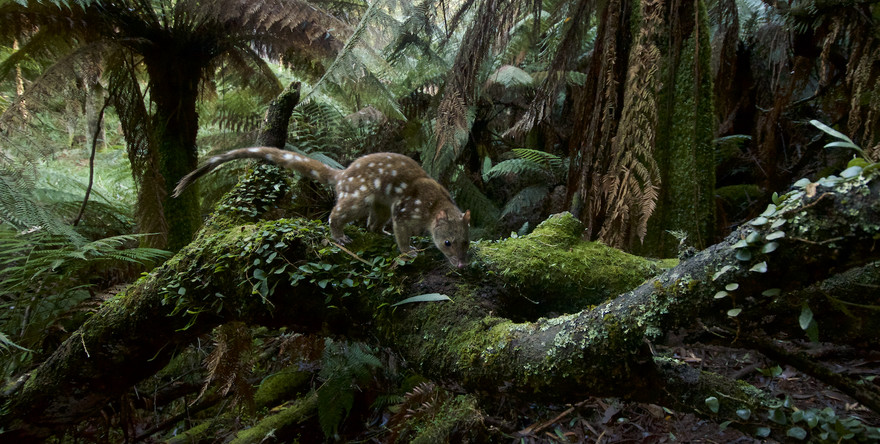In 2016 my documentary film, Understorey was completed. Understorey was a thematic outline of the ongoing forty year campaign to protect the south east forests of Australia from logging and wood chipping. Understorey features a number of threatened species and rarely seen animal behaviour. In the last months of production one piece was yet to be recorded, video of the rarely seen spotted-tail quoll. Fortunately the quoll was recorded in Monga National Park, a valuable connective corridor between the large Deua National Park and Budawang National Park wilderness areas. Monga was hard won by environmental activists earlier this century.
The vast majority of quoll photos are recorded in zoos and animal parks so to record something in a beautiful forest habitat was a challenge because they are so rarely seen in the wild. Only two or three Australians out of every five who see the image know what a quoll is so the image is having a positive educational role in making people aware of this vulnerable species and the biodiversity in our forests.
In the months after the Understorey was completed a new effort was made to record a quality still of the quoll in its habitat. Several images were recorded by a DSLR with laser trigger in a patch of forest close to a communal quoll latrine and stream bed. The area is quite wet with mist often present in the air so a home made weather housing was built to protect the camera and 12 volt electronics to keep the camera in the field for a month or so.
The background of tree ferns and the ’S’ shaped lichen covered branch which the quoll moves along are important elements in the image. A wide angle lens brings many details into focus or near focus but the green and brown palette unifies the whole frame. Relying on natural light was a gamble and many images were spoiled through subject movement or condensation on the lens. Most images were recorded under 1/200 sec. In this particular image the highlighted tip of the tail stands in contrast to the tree fern stem in shadow which is a satisfying (and random) result. Overall, the photo came out fairly close to what I pre-conceived which is not easy when pre-setting a rig for weeks in the field. I wanted to show the quoll in a rich forest setting. One of the images recorded a male quoll scent marking the branch with his chest. He looks like he is poised to ambush his prey. Motion video cameras revealed the quolls quickly adapted to the DSLR shutter sound which was left on the quietest setting.
The main task in post processing was to crop out any sky at the top of the frame to emphasise the 'wall to wall' tree fern background. This gave a more panoramic effect which was a gamble due to this shot being recorded in the trial set up with a modest Nikon D7000 crop body. As a 12 v battery was hooked up to the DSLR rig I used my oldest camera in case the electronics were fried when the voltage was converted. Hence, the file size is not overly large.
As it happens, quolls were recorded with full frame cameras later on but the forest lighting, which is so variable and limited in this darkened understorey, was never as even (with saturated colour) in later recordings. In post production very little had to be done to the RAW file with colour and contrast. Part of the quoll’s fur was lightened.


